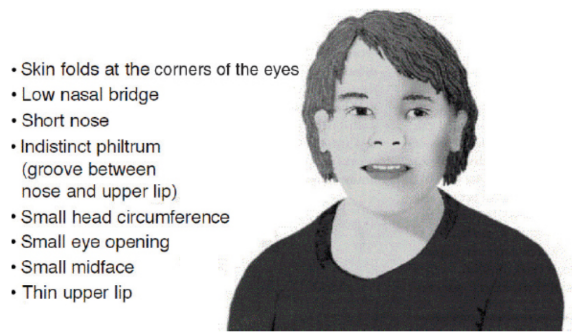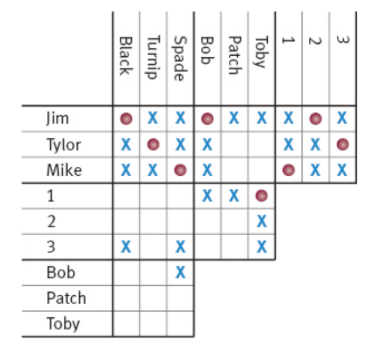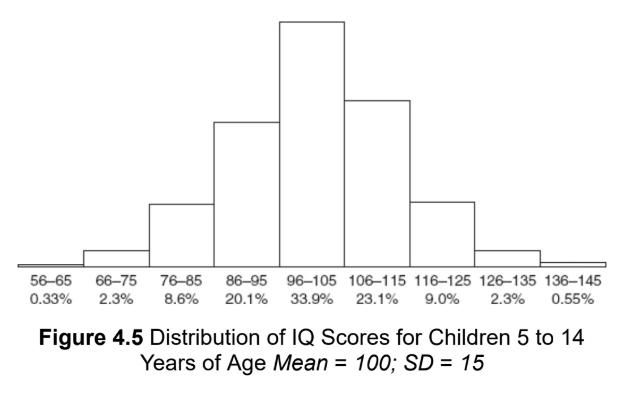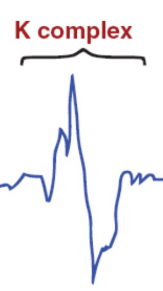MCAT Behavioral Sciences - Cognition, Consciousness, and Language
1/168
Earn XP
Description and Tags
282
Name | Mastery | Learn | Test | Matching | Spaced |
|---|
No study sessions yet.
169 Terms
cognition
how our brains process and react to the information presented by the world
dual-coding theory
both verbal association and visual images are used to process and store information
ex. tree - word and picture
information processing model
Thinking requires sensation, encoding, and storage of stimuli.
Stimuli must be analyzed by the brain (rather than responded to
automatically) to be useful in decision-making.
Decisions made in one situation can be extrapolated and adjusted to help solve new problems (also called situational modification).
Problem solving is dependent not only on the person’s cognitive level, but also on the context and complexity of the problem.
Cognitive development
development of one’s ability to think and solve problems across the life span; limited by the pace of brain maturation; includes learning control of one’s own body as well as learning how to interact with and manipulate the environment
Abstract thought
the ability to think about things that are not physically present
diminished in certain mental conditions, i.e. schizophrenia
Jean Piaget
one of the most influential figures in developmental psychology; model of cognitive development; qualitative differences between the way that children and adults think; passage through each of these stages was a continuous and sequential process in which completion of each stage prepares the individual for the stage that follows
schema
organized patterns of behavior; can include a concept, a behavior, or a sequence of events
adaptation
how new information is processed
Assimilation
the process of classifying new information into existing schemata
Accommodation
the process by which existing schemata are modified to encompass this new information
sensorimotor stage
birth → 2 yearsa child learns to
manipulate the environment in order to meet physical needs and learns to coordinate sensory input with motor actions
circular reactions
behaviour pattern of repetitive nature
Primary circular reactions
repetitions of body movements that originally occurred by chance, and continue if child finds them soothing
ex. thumb sucking
Secondary circular reactions
when manipulation is focused on something outside the body and continues if gains environmental/social reaction
ex. repeatedly throwing toys from a high chair as a parent picks up the dropped toy
object permanence
the understanding that objects continue to exist even when out of view; key milestone that ends sensorimotor stage
ex. peek-a-boo

representational thought
create mental representations of external objects and events
preoperational stage
2 → 7 years
symbolic thinking, egocentrism, centration
Symbolic thinking
the ability to pretend, play make-believe, and have an imagination.
Egocentrism
the inability to imagine what another person may think or feel
ex. barrel experiment
conservation
understanding that a physical amount remains the same, even if there is a change in shape or appearance; preoperational lack
ex. tall vs stout glass; pizza sliced in half
centration
tendency to focus on only one aspect of a phenomenon while ignoring other important elements
concrete operational stage
7 → 11 years
understand conservation; consider others perspectives; logical thought with concrete objects or given information
formal operational stage
11 years →
logical thinking about abstract ideas; problem solving; hypothetical reasoning.
Piaget’s pendulum experiment
what determines a pendulum’s frequency?
concrete operational - changed variables at random, distorted data
formal operational - followed scientific method by changing one variable at a time
hypothetical reasoning
ability to mentally manipulate variables in a number of ways, generally within the scope of scientific experiments
Lev Vygotsky
prominent educational psychologist; proposed that the engine driving cognitive development is children’s internalization of their culture, including interpersonal and societal rules, symbols, and language
Fluid intelligence
solving new or novel problems, possibly using creative methods; peak in early adulthood but decline with age
ex. new video game navigation
Crystallized intelligence
related to solving problems using acquired knowledge, and often can be procedural; peaked in middle adulthood and remains stable with age
ex. stoichiometry problem
activities of daily living
eating, bathing, toileting, dressing, and ambulation; loss of function linked to intellectual/cognitive decline in older adults; higher level of education, more frequent performance of intellectual activities, socializing, and a stimulating environment have been found to be protective against intellectual decline
dementia
disorders and conditions that are characterized by a general loss of cognitive function, includes memory loss, impaired judgement, confusion, personality changes; caused by Alzheimer’s, Vascular multi-infarct dementia; often need full time supportive care, often from family
organic brain disorders
problems with the brain itself
ex. many genetic and chromosomal diseases such as Down syndrome
and Fragile X syndrome are associated with delayed cognitive development.
fetal alcohol syndrome
alcohol use during pregnancy results in slowed cognitive development and distinct craniofacial features

shaken baby syndrome
reduced cognition (and even death.) following trauma to the brain as an infant
delirium tremens
delirium associated with alcohol withdrawal; can be life-threatening
alcohol is the only major drug of abuse in which both overdose and withdrawal can be lethal.
Delirium
rapid fluctuation in cognitive function that is reversible and caused by medical (nonpsychological) causes; may be caused by electrolyte and pH disturbances, malnutrition, low blood sugar, infection, a drug reaction, alcohol withdrawal, and pain.
mental set
the tendency to approach similar problems in the same way
functional fixedness
innappropriate mental set that limits the way objects can be used; the inability to consider how to use an object in a nontraditional manner.
Trial-and-error
less sophisticated type of problem solving in which various solutions are tried until one is found that seems to work
algorithm
a formula or procedure for solving a certain type of problem
Deductive (top-down) reasoning
starts from a set of general rules and draws conclusions from the information given
ex. logic puzzles (from vague statements, come to one objective true conclusion)

Inductive (bottom-up) reasoning
seeks to create a theory via generalizations of speciifc instances
ex. Sherlock Holmes (sees a small detail, constructs a likely story behind it)
Heuristics
simplified principles used to make decisions; “rules of thumb.”
availability heuristic
heuristic used when we base the likelihood of an event on how easily examples of that event come to mind
ex. airplane vs car accidents
representativeness heuristic
categorizing items on the basis of whether they fit the prototypical, stereotypical, or representative image of the category
ex. taxicab problem
base rate fallacy
Using prototypical or stereotypical factors while ignoring actual numerical information
disconfirmation principle
the evidence obtained from testing demonstrated that a solution does not work, and should therefore be discarded
Confirmation bias
the tendency to focus on information that fits an individual’s beliefs, while rejecting information that goes against them
overconfidence
a tendency to erroneously interpret one’s decisions, knowledge, and beliefs as infallible
hindsight bias
the tendency for people to overestimate their ability to predict the outcome of events that already happened
belief perseverance
the inability to reject a particular belief despite clear evidence to the contrary
Intuition
as the ability to act on perceptions that may not be supported by available evidence; developed by experience
recognition-primed decision model
sorting through a wide variety of information to match a pattern through an extensive level of experience that can be accessed without awareness
Emotion
the subjective experience of a person in a certain situation; influences how a person thinks and makes decisions.
Gardner’s multiple intelligences
eight defined types of intelligence: linguistic, logical–mathematical, musical, visual–spatial, bodily–kinesthetic, interpersonal, intrapersonal, and naturalist
Interpersonal intelligence
the ability to detect and navigate the moods and motivations of others
intrapersonal intelligence
being mindful of one’s own emotions, strengths, and weaknesses
Sternberg’s triarchic theory of human intelligence
analytical, creative and practical intelligence
analytical intelligence
the ability to evaluate and reason
creative intelligence
the ability to solve problems using novel methods
practical intelligence
dealing with everyday problems at home or at work
emotional intelligence
the ability to express and perceive emotions in ourself and others, the ability to comprehend and analyze our emotions, the ability to regulate our emotions, and awareness of how emotions shape our thoughts and decisions
ex. empathy
Spearman’s g factor
general intelligence; based on the observation that performance on different cognitive tasks is in many cases positively correlated
intelligence quotient (IQ)
the underlying variable/unit of intelligence
IQ = mental age/chronological age × 100

Stanford–Binet IQ test
intelligence test developed by Alfred Binet and Stanford professor
Alertness
a state of consciousness in which we are awake and able to think, perceive, process, access, and verbalize information; physiological arousal
physiological arousal
characterized by physiological reactions such as increased heart rate, breathing rate, blood pressure, cortisol levels tend to be higher, and electroencephalogram (EEG) waves indicate a brain in the waking state
reticular formation
a neural structure located in the brainstem, associated with wakefulness; disruption causes coma
Consciousness
one’s level of awareness of both the world and one’s own existence within that world
Sleep
a state of reduced mental and physical activity in which consciousness is altered and certain sensory activity is inhibited; deprivation has been linked with diminished cognitive performance as well as the development of chronic diseases such as diabetes and obesity
electroencephalography (EEG)
records an average of the electrical patterns within different portions of the brain
Beta waves
awake; high frequency and occur when the person is alert or attending to a mental task that requires concentration; occur when neurons are randomly firing

Alpha waves
awake; relaxing with our eyes closed; are somewhat slower than beta waves; more synchronized than beta waves

Stage 1 (NREM1)
dozing off; characterised by theta waves
Theta waves
characterized by irregular waveforms with slower frequencies and higher voltages

Stage 2 (NREM2)
deeper sleep; theta waves along with sleep spindles and K complexes
sleep spindles
bursts of high-frequency waves

K complexes
singular high-amplitude waves

Stage 3 (NREM3)/slow-wave sleep (SWS)
delta waves; deep sleep; rousing someone from sleep becomes exceptionally difficult; associated with cognitive recovery and (declarative) memory consolidation, as well as increased growth hormone release
Delta waves
low-frequency (few sleep waves per second), high-voltage sleep waves

non-rapid eye movement sleep (NREM)
1-3 stages of sleep
rapid eye movement (REM)/paradoxical sleep
arousal levels reach that of wakefulness, but the muscles are paralyzed; heart rate, breathing patterns, and EEG mimic wakefulness, but the individual is still asleep; dreaming is most likely to occur and is also associated with (procedural) memory consolidation
sleep cycle
a single complete progression through the sleep stages
Early in the night, SWS predominates as the brain falls into deep sleep and then into more wakeful states. Later in the night, REM sleep predominates

circadian rhythms
daily cycle of waking and sleeping is regulated by internally generated rhythms; approximately 24-hour cycle somewhat affected by external cues such as light but underlain by biochemical signals
melatonin
a serotonin-derived hormone from the pineal gland that causes sleepiness
pineal gland
a small endocrine gland in the brain of most vertebrates that produces melatonin
Cortisol
a steroid hormone produced in the adrenal cortex related to wakefulness; levels slowly increase during early morning: increasing light → corticotropin-releasing factor (CRF) from the hypothalamus → adrenocorticotropic hormone (ACTH) from the anterior pituitary → cortisol release
dreams
a succession of images, ideas, emotions, and sensations that usually occur involuntarily in the mind during certain stages of sleep
activation–synthesis theory
dreams are caused by widespread, random activation of neural circuitry; mimic incoming sensory information, and may also consist of pieces of stored memories, current and previous desires, met and unmet needs, and other experiences; cortex then tries to stitch this unrelated information together, resulting in a dream that is both bizarre and somewhat familiar
problem solving dream theory
dreams are a way to solve problems while you are sleeping; Dreams are untethered by the rules of the real world, and thus allow interpretation of obstacles differently than during waking hours
cognitive process dream theory
dreams are merely the sleeping counterpart of stream-of-consciousness
Neurocognitive models of dreaming
seek to unify biological and psychological perspectives on dreaming by correlating the subjective, cognitive experience of dreaming with measurable physiological changes
Freudian dream theory
manifest content - what one actually sees and hears in a dream
latent content - the underlying significance of these dream elements
Dyssomnias
disorders that make it difficult to fall asleep, stay asleep, or avoid sleep
ex. insomnia, narcolepsy, and sleep apnea
Parasomnias
abnormal movements or behaviors during sleep
ex. night terrors and sleepwalking
Insomnia
difficulty falling asleep or staying asleep; most common sleep-wake disorder; may be related to anxiety, depression, medications, or disruption of sleep cycles and circadian rhythms
Narcolepsy
a condition characterized by lack of voluntary control over the onset of
sleep; cataplexy, sleep paralysis, and hypnagogic and hypnopompic
hallucinations
cataplexy
a loss of muscle control and sudden intrusion of REM sleep during waking hours, usually caused by an emotional trigger
sleep paralysis
a sensation of being unable to move despite being awake
hypnagogic/hypnopompic hallucinations
hallucinations when going to sleep or awakening, respectively
sleep apnea
inability to breathe during sleep; awaken oen during the night in order to breathe; obstructive (physical blockage in pharynx or trachea) or central (brain fails to tell diaphragm to move)